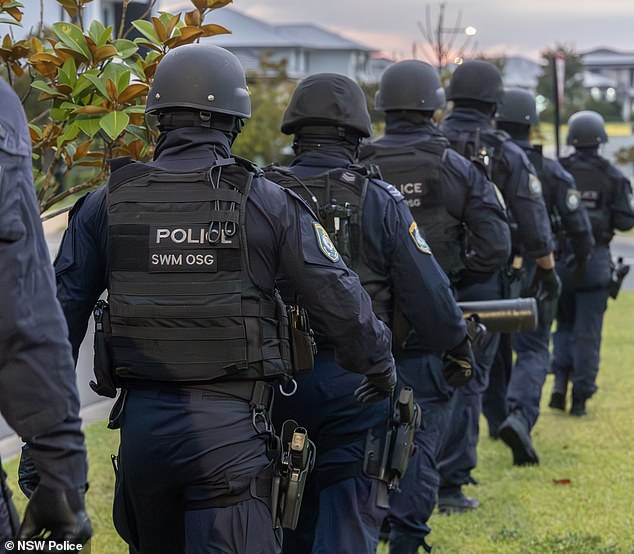Why Australia’s latest terror threat is so different to the previous ones and has ASIO boss Mike Burgess worried
Australia’s spy chief has expressed concern about the number of young people being recruited by extremists and the rapid rate at which citizens are becoming radicalised.
ASIO chief Mike Burgess said his department was concerned after the country’s terror threat level was raised from possible to probable on Monday.
It was the first time the level was raised since the greatest threats from Islamic State emerged in 2014.
Security officials have investigated eight incidents in Australia over the past four months for possible terrorist links.
Mr Burgess has warned that there is a 50 per cent chance of an attack on Australian soil in the next year.
The director-general said the situation today is “completely different” from when the threat level was raised a decade ago.
“More and more people are radicalizing faster and more people think violence is permissible based on a range of grievances and ideologies, not just what we saw in 2014,” he said. ABC 7.30 program on Monday evening.
He added that of the eight incidents involving possible terrorism, five involved people aged between 14 and 21, and more than half were religiously motivated.
The biggest concern was that only two incidents involved people known to ASIO or the police.
Australia’s spy chief (pictured ASIO chief Mike Burgess) has revealed the terror threat level has been raised as more young people are becoming more radicalised and turning to violence
“The rest of the eight are an equal mix of religiously motivated, nationalist, racist and, in one case, a mixed ideology that leans both left and right,” Burgess said.
‘All but two were unknown to us and the police.
“This is the new trend: people are acting violently without warning and without us knowing. In some cases, there is little or no planning.”
While the Middle East conflict has increased security services’ concerns about politically motivated violence in Australia, it is not the direct cause of the rising threat level.
Mr Burgess said young people were “particularly vulnerable” through social media, which could increase feelings of isolation.
“The Internet is great, but it allows people to latch onto something and achieve it in a matter of days, not months or years,” he said.
“That is particularly worrying.”
The ASIO director said it was important for parents to know what their children were doing online.
He said that during the Covid lockdowns, half of his priority cases in the fight against terrorism involved minors.
“Locked in their bedrooms, devices in hand, they can quickly spiral down a rabbit hole of hate, with no regard for the school playground, community groups or the positive benefits of family time,” he said.
‘Covid is of course no longer here, but it is still an issue. It is a concern how social media can quickly grab people. The internet can quickly grab people and harm young brains that are not yet fully formed.’
According to Mr Burgess, neo-Nazis are also a threat.
These neo-Nazis include the “accelerationists,” whom Burgess described as people who believe in white supremacy and “are not happy with the way the world is run today.”

The threat level was raised from possible to probable on Monday, the first time since the height of the Islamic State threats in 2014 (stock image)
“They want a downfall to get things back on track as they see them,” he said.
Prime Minister Anthony Albanese said the national security committee met Monday morning to discuss the change in the threat level.
“Probable does not mean inevitable and it does not mean there is intelligence of imminent danger,” Albanese told reporters in Canberra.
“But the advice we’ve been getting is that more and more Australians are embracing a wider range of extreme ideologies.”
The prime minister said it was “our responsibility to be vigilant” but sought to reassure Australians by reiterating that the same threat level had been in place for more than eight years before being lowered in November 2022.
Burgess said earlier that politically motivated violence now poses the main security challenges, alongside espionage and foreign interference.
He added that anti-authority attitudes were also increasing and trust in democratic institutions was declining.
“This trend continued during Covid, gained further momentum after the terrorist attacks in Israel, and accelerated during Israel’s military response,” he said.
‘The (Middle East) conflict has fueled discontent, incited protests, increased divisions, undermined social cohesion and increased intolerance.’
A lone perpetrator was also the most likely form of terrorist attack, often using simple weapons in a crowded or public place.
